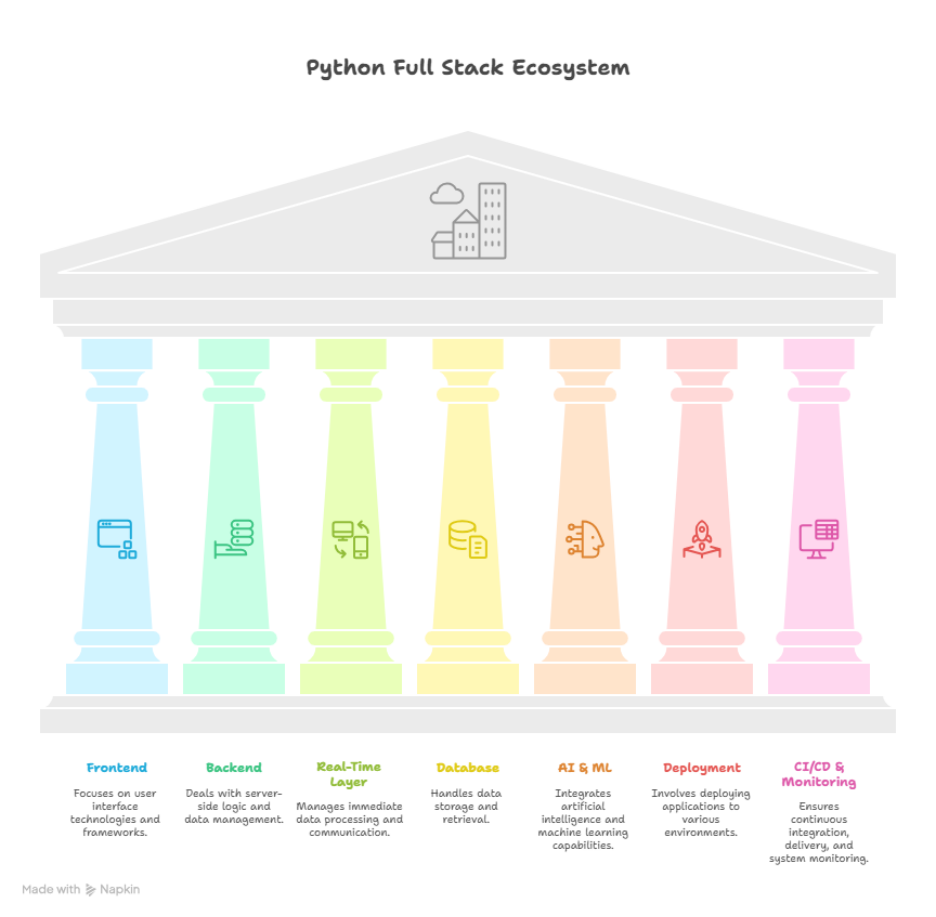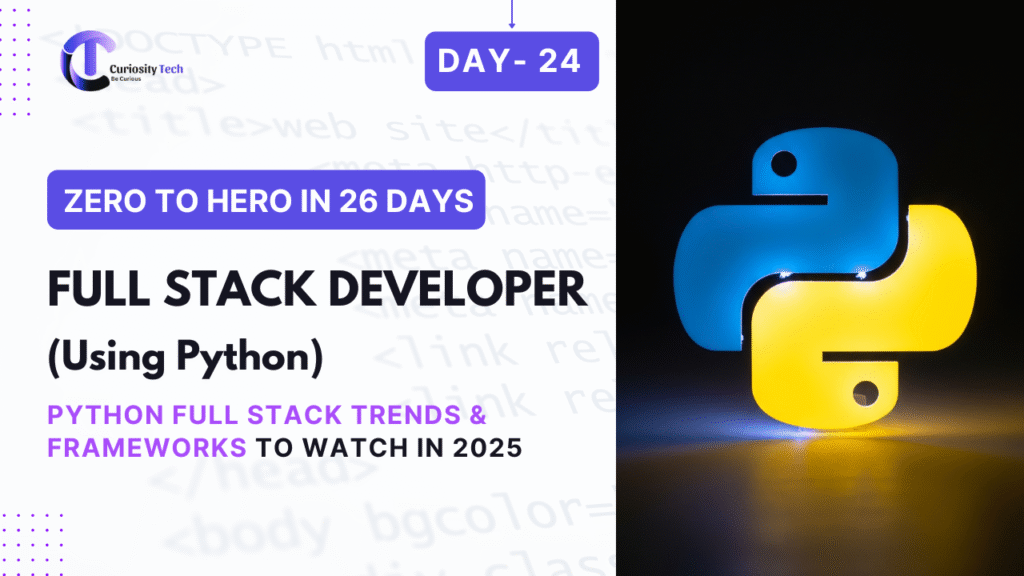Introduction
The landscape of Python Full Stack development is evolving rapidly, with new frameworks, libraries, and technologies emerging every year. Staying updated with trends ensures developers remain competitive, build modern applications, and adopt best practices.
At http://curiositytech.in, we emphasize learning not just current tools but also anticipating the future of Python Full Stack development. In this blog, we’ll explore trending frameworks, tools, and practices that every developer should watch in 2025.
1. Frameworks for Backend Development
| Framework | Description | Trend in 2025 |
| Django | Full-featured, mature, scalable | Remains popular; evolving async support |
| Flask | Lightweight microframework | Increasing use in microservices and APIs |
| FastAPI | Modern, high-performance, async-first framework | Rapid adoption due to async performance & type hints |
| Tornado / Sanic | Asynchronous Python web servers | Niche, used in real-time or low-latency apps |
�� Trend: Async-first frameworks like FastAPI are becoming mainstream for real-time APIs, AI apps, and microservices.
2. Frontend Integration
| Trend/Library | Why It Matters |
| React.js | Remains dominant for SPA development |
| Vue.js 3 / Nuxt.js | Lightweight, fast, flexible |
| Svelte | Emerging, faster runtime, less boilerplate |
| Next.js / Remix | Server-side rendering + React integration |
�� Insight: Python Full Stack developers increasingly need modern JS frameworks for seamless frontend-backend integration.
3. Real-Time Applications & WebSockets
- Trend: Apps are increasingly interactive and real-time (chat, live dashboards, collaboration tools).
- Frameworks: Django Channels, FastAPI with WebSockets, Socket.IO with Flask.
- Impact: Developers must understand async programming, WebSockets, and event-driven architectures.
4. API-First Architecture
- REST APIs continue to be standard, but GraphQL adoption is growing.
- Tools to watch:
- Graphene (Python GraphQL library)
- Strawberry GraphQL (type-hinted, async-ready)
- Why it matters: Enables efficient data fetching, reduces over-fetching, and improves frontend integration.
5. Microservices & Serverless Architecture
| Approach | Python Tools / Frameworks | Benefit |
| Microservices | FastAPI, Flask, Docker, Kubernetes | Modular, scalable, easier team collaboration |
| Serverless | AWS Lambda, Google Cloud Functions, Zappa | Pay-per-use, minimal server management |
�� Trend: Combining Python with cloud-native architectures is essential for scalable apps.
6. AI, ML & Python Full Stack
- Python’s dominance in AI/ML means Full Stack developers need integration skills:
- TensorFlow / PyTorch models served via FastAPI endpoints
- Real-time AI applications like recommendation engines, chatbots
- Trend: Full Stack apps are becoming AI-powered, requiring Python developers to bridge model deployment and web integration.
7. DevOps & CI/CD Integration
| Tool / Technology | Purpose |
| Docker & Kubernetes | Containerization & orchestration |
| GitHub Actions / GitLab CI | Automate tests and deployment |
| Terraform / Ansible | Infrastructure as code |
| Sentry / New Relic | Monitoring & performance tracking |
�� Insight: Modern Full Stack developers need DevOps awareness to deploy Python apps efficiently and reliably.
8. Security & Best Practices
- Trend: Security is integral, not optional.
- Tools & Practices:
- Dependency scanning (pip-audit)
- Automated security testing
- OAuth2 / JWT authentication
- Developers must build secure applications from the ground up, especially with AI/real-time features.
Infographic Idea – Python Full Stack 2025 Tech Stack

- Shows the modern, multi-layered Python Full Stack ecosystem.
Real-World CuriosityTech Example
- Students at http://curiositytech.in explored FastAPI + React projects with AI integration:
- Created real-time dashboards with WebSocketsIntegrated ML models as APIs
- Deployed on AWS Lambda with CI/CD pipelines
- Outcome: Learners gained hands-on experience with trending technologies, preparing them for 2025-ready Full Stack development.
Best Practices for Staying Ahead
- Learn async-first frameworks like FastAPI.
- Stay updated with modern frontend frameworks.
- Embrace real-time and AI-powered applications.
- Understand microservices, serverless, and cloud-native architecture.
- Integrate DevOps and security best practices into your workflow.
- Participate in community forums, open-source projects, and continuous learning.
Conclusion
Python Full Stack development in 2025 emphasizes speed, real-time interactivity, AI integration, security, and cloud-native architectures. Developers must adapt, experiment, and embrace emerging frameworks to stay competitive.
At ,http://curiositytech.in learners explore future-ready Full Stack projects, integrating FastAPI, React, AI, WebSockets, and cloud deployments, ensuring they are fully prepared for modern software development challenges.



